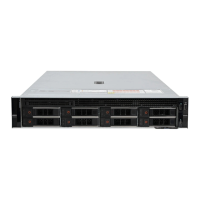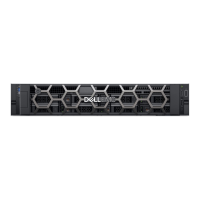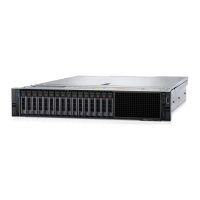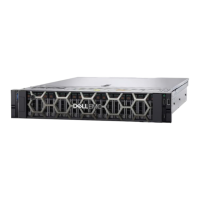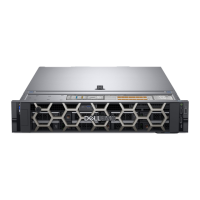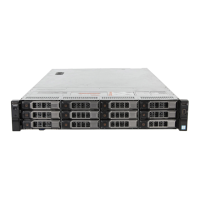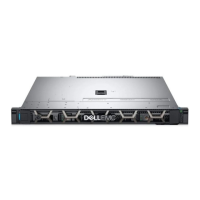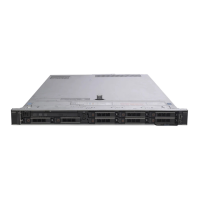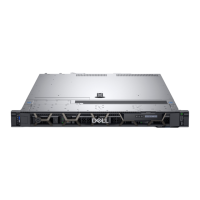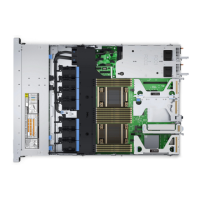Do you have a question about the Dell EMC PowerEdge R750 and is the answer not in the manual?
Outlines the general steps for unpacking and powering on the server.
Explains the purpose and basic network configuration of iDRAC.
Lists the essential components required for the system to power on and pass POST.
Explains how the system validates its configuration during POST and reports errors.
Provides critical safety warnings and precautions before performing component removal or installation.
Outlines essential prerequisites and steps to take before opening the server.
Details the steps to follow after component replacement and before powering on.
Provides guidelines and information on installing and removing system memory modules (DIMMs).
Covers the removal and installation of the processor and its associated heat sink or liquid cooling module.
Discusses expansion card installation guidelines and riser configurations.
Provides instructions for removing a Graphics Processing Unit (GPU) from the expansion card riser.
Details the procedure for installing a GPU into the expansion card riser.
Covers the procedure for replacing the system battery.
Discusses PSU installation and the hot spare feature.
Covers upgrading and removing the Trusted Platform Module (TPM).
Explains how to remove and install the system board.
Details components for GPU kits (full length and half length) and installation guidelines.
Provides steps to disable system passwords using a jumper.
Describes the status LEDs and their meaning for different component conditions.
Explains the system health and ID indicator codes on the left control panel.
Describes the status indicator codes for AC and DC power supply units (PSUs).
Guides on running system diagnostics for troubleshooting hardware issues.
Introduces the Dell Embedded System Diagnostics (ePSA) and its features.
| Form Factor | 2U rack server |
|---|---|
| Processor | Up to 2x 3rd Generation Intel Xeon Scalable processors, with up to 40 cores per processor |
| Memory | Up to 32 DDR4 DIMM slots |
| Storage | Up to 24 x 2.5" SAS/SATA (HDD/SSD) or up to 12 x 3.5-inch SAS/SATA (HDD) drives, and up to 4 NVMe drives |
| Power Supply | 1100W |
| Network | 2 x 1GbE |
| RAID Controller | PERC H755 |
| Expansion Slots | Up to 8 x PCIe Gen4 slots |
| GPU Support | Up to 3 x double-width GPUs or 6 x single-width GPUs |
| Operating System Support | Microsoft Windows Server, Ubuntu, Red Hat Enterprise Linux, VMware ESXi, SUSE Linux Enterprise Server |
